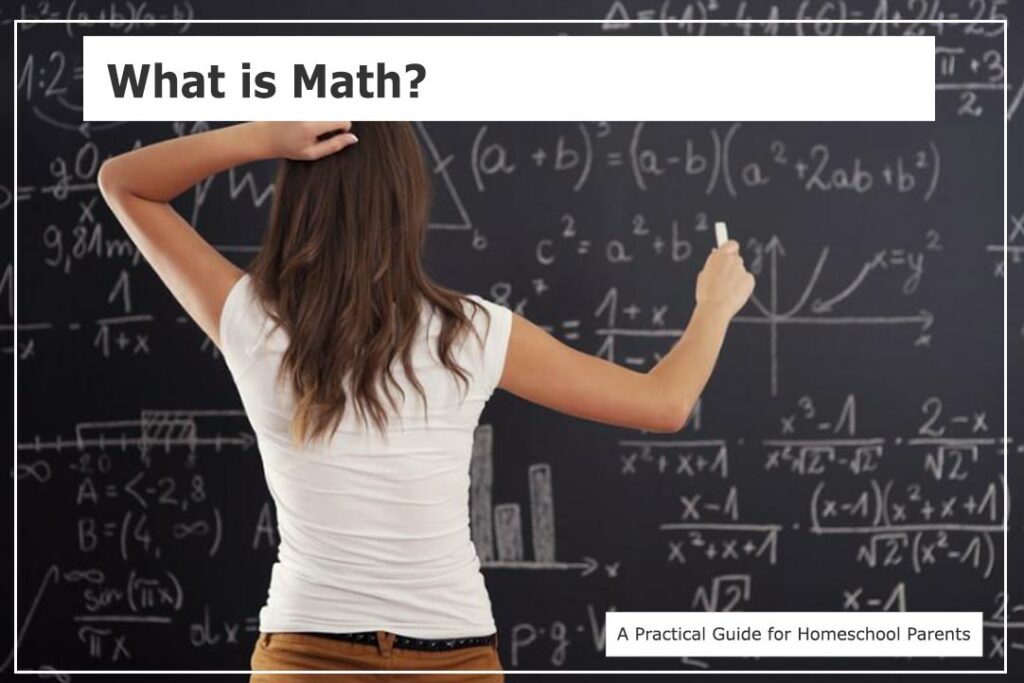What is math, really?
A Practical Guide for Homeschool Moms
Have you ever felt like math is just a frustrating collection of rules and formulas? You're not alone—many kids (and parents!) feel that way. But what if we thought of math as a toolbox, full of tools like hammers, screwdrivers, and wrenches, that help us solve real-world problems?
The problem with traditional math teaching is that it often focuses on the nitty-gritty details of the tools without ever showing kids how to use them. That’s like handing someone a hammer and teaching them how to swing it, but never showing them how to actually build a birdhouse. No wonder so many kids find math boring!
Math Is More Than Numbers
A Practical Guide for Homeschool Moms
When most kids hear “math,” they think of numbers—adding, multiplying, dividing. But math is so much more than that! Here’s a simple breakdown of three key areas:
- Numbers: Great for kids who love adding, subtracting, and working with patterns in numbers.
- Shapes and Space (Geometry): Perfect for kids who enjoy puzzles or working with shapes and measurements.
- Logic: Ideal for kids who love solving riddles, playing strategy games, or cracking codes.
Math isn’t about being good at everything—it’s about finding what clicks with your child’s strengths and showing them how to use those skills in the real world.
Why Real-World Math Matters
One of the biggest mistakes in teaching math is not connecting it back to everyday life. Kids start to see math as just a set of problems to solve on paper, without realizing how useful and exciting it can be.
But think about this:
- Math is counting back change at the store.
- It’s figuring out how much gas you’ll need to make it to the next town.
- It’s packing a moving truck and making everything fit.
- It’s even outsmarting your neighbor in chess.
Math is everywhere when you know how to look for it. And when kids start seeing math as a way to solve problems that matter to them, it stops feeling like a chore.
Practice AND Performance
Learning math is like learning a sport. Sure, you need practice to get good—but if all you ever do is practice, it gets dull fast.
Imagine signing your child up for soccer, and all they ever did was run drills. No games, no cheering crowds, no keeping score—just drills, day in and day out. Would they stick with it? Probably not.
Math needs both practice and performance. It’s important to do the work (practice) but also to use math to solve exciting, real-world problems (performance). That’s where the fun comes in!
When Math Isn’t “Right”
Here’s something that surprises a lot of kids: math isn’t always perfect. Sometimes, you can get multiple answers to a problem, and it takes critical thinking to figure out which one makes sense.
For example, I once solved a problem and got two answers: 53 feet and also 6 inches. Both answers were technically correct based on calculations, so I had to look back at the original problem to realize that 6 inches made sense—because there’s no such thing as a 53-foot badger!
Math teaches us to think critically, check our work, and connect what’s on paper to the real world.
Math + Science = Magic
Math becomes even more powerful when it’s combined with science. Together, they let us model the real world, solve problems, and create amazing solutions.
For example, imagine designing a car. Math lets us calculate how the suspension should work to make the ride as smooth as possible. It’s like finding the “sweet spot” on a baseball bat where the hitter feels almost no vibration. Math helps us figure out exactly where to put the car’s wheels to make the ride feel amazing.
Unfortunately, not every teacher has the skills to teach math and science this way. But as homeschool parents, we can weave these connections into lessons—showing kids how math and science work together to make the impossible possible.
So, What Is Math?
Math is a tool. It helps us take the messy, complicated real world and model it on paper so we can solve problems more easily. But math doesn’t stop there—it challenges us to take those solutions and bring them back into the real world to see how well they work.
And here’s the thing: mistakes are part of the process. That’s why I always use a pencil when solving math problems—so I can erase, learn, and try again.
So let’s not get stuck on drills and formulas. Let’s show kids how math can solve real problems, spark their curiosity, and help them understand the world in a whole new way.
What about you? How do you bring math to life in your homeschool? Send me a note to let me know - I'd love to hear your ideas!
Just Enter Your Email To Receive
5 Free Hands-On Science Lessons!

Just enter your email and you’ll get instant access to this complete mini-science curriculum.
This free sample program includes:
See how easy it can be for you to go from “Frustrated” about not having enough time or resources for Science… To “Fascinated” by how your kids learn science better than EVER before because now they’re enjoying it!



